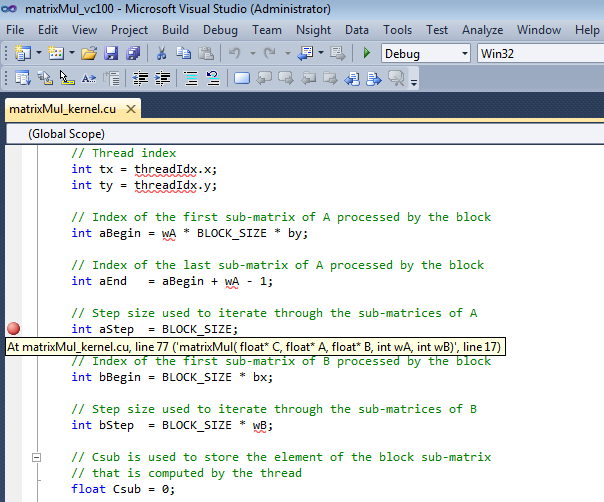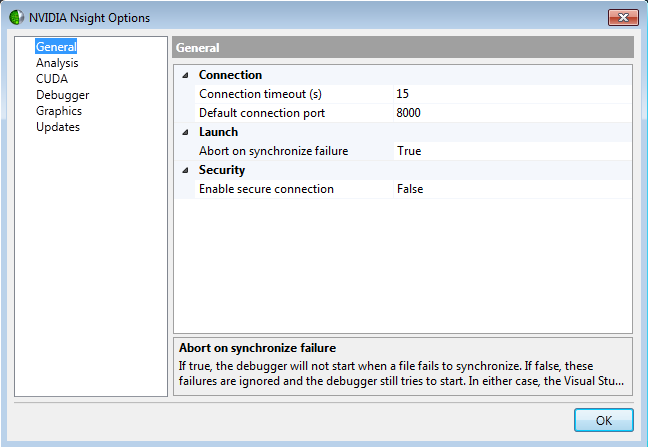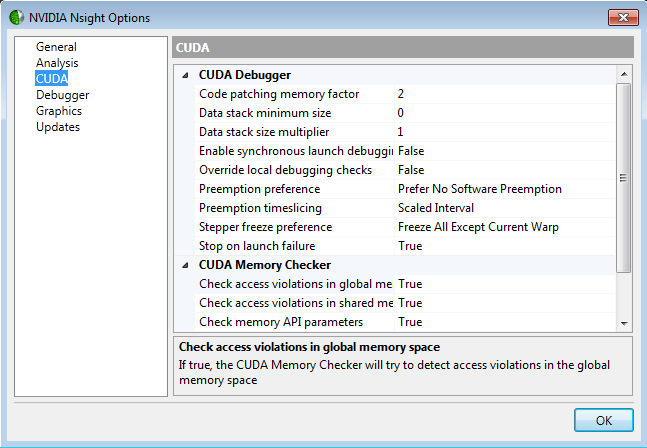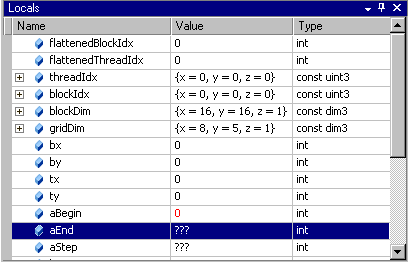For assistance opening the sample projects that ship with NVIDIA Nsight, see Working with Samples.
You might notice that there is another sample project with a similar name, Matrix Multiply (Driver API), which uses the CUDA driver API. The project we use in this example uses the CUDA Runtime API.
- Open the file called
matrixMul_kernel.cu. - Set a breakpoint in
matrixMul_kernel.cuat the statement:int aStep = BLOCK_SIZE
Visual Studio marks the location of the breakpoint with a red circle. You can also use any of the other various methods that Visual Studio provides to set breakpoints.
matrixMul_kernel.cu at the statement that begins:for {int a = aBegin, b = bBegin;







